Hidden Gems of Gangwon-do: Hoengseong Lake Trail - Relaxing Walk in Gangwon-do
When most travelers think of Gangwon-do, they picture ski resorts and busy beaches. But let me take you off the beaten path to three serene, lesser-known spots in Gangwon-do that completely stole my heart. From a peaceful lakeside trail in Hoengseong to a fairytale birch forest in Inje, and finally up to the star-studded skies of Daegwallyeong’s highlands – these hidden gems offer a dreamy escape into nature. It’s like having a local friend guide you to their secret hangouts, which is exactly how I felt exploring them.
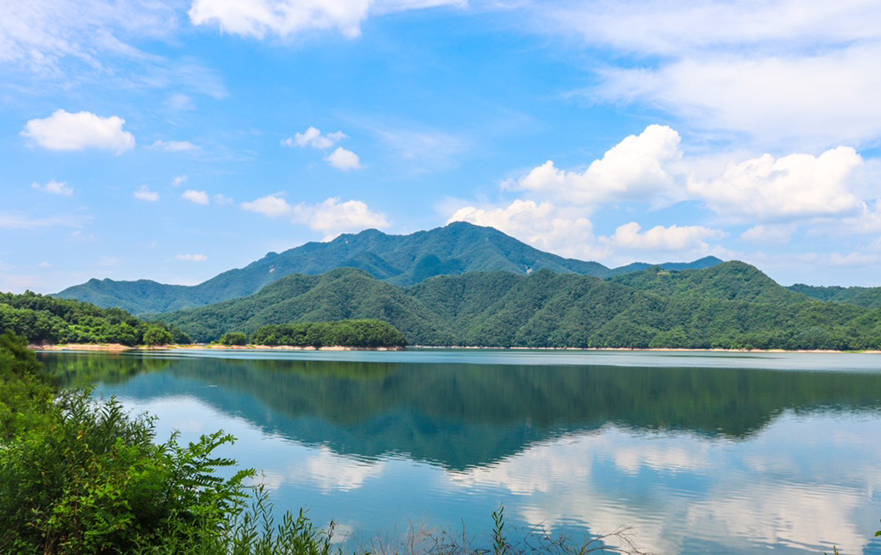
Hoengseong Lake Trail (Section 5 – Family Road) 횡성호수길 5구간
Address: 40 Taegi-ro Gubang 5-gil, Gapcheon-myeon, Hoengseong-gun, Gangwon-do
My journey began at Hoengseong Lake Trail Section 5, a 9 km “Family Road” looping gently around Hoengseong Lake. The moment I set foot on the path, I felt the world slow down. Tall pines and oaks line the trail, and the lake’s calm water mirrors the sky and mountains – so clear that I paused multiple times just to soak in the reflection. Few people know about this corner of Gangwon-do, so it was wonderfully quiet; I could hear the soft crunch of my steps on the dirt and the distant chatter of birds. Every few hundred meters there’s a little surprise, be it a wooden observation deck offering panoramic lake vistas or a quirky cute sculpture greeting you from the side of the trail. I even stumbled on an “aspens grove” near the Hoengseong Lake Shelter Observatory – a perfect spot to sit and feel the breeze.
One thing I love is that this trail is quite accessible: parts of it are barrier-free, meaning even strollers or wheelchairs can join for certain sections (from the parking lot to a family rest area). It’s an easy walk with gentle slopes – my kind of “hike” when I just want to relax, not break a sweat. Do note the trail is only open in daylight hours (roughly 9am to 5pm, a bit earlier closing in winter) and there are no lights at night, so plan to finish before dusk. There’s a small entrance fee of ₩2,000, but in a delightful twist, the ticket came with a voucher of the same amount to use at local shops – basically encouraging you to enjoy a snack or treat in town later. How neat is that?
After circling back to the start (Section 5 is the only Hoengseong Lake course that loops back on itself, which is super convenient), I was feeling peckish. Luckily, right near the trailhead I found Hosugil Cafe (호수길카페), a charming lakeside café with an outdoor terrace. I sat with a steaming cup of ginger tea and a slice of homemade cake, overlooking the very lake I’d just walked around. The owner, an older lady, chatted with me in broken English (and me in broken Korean), and we laughed about the ducks that sometimes wander near the terrace. It was the perfect little rest stop to end my Hoengseong Lake adventure, enjoying the peaceful atmosphere a bit longer.
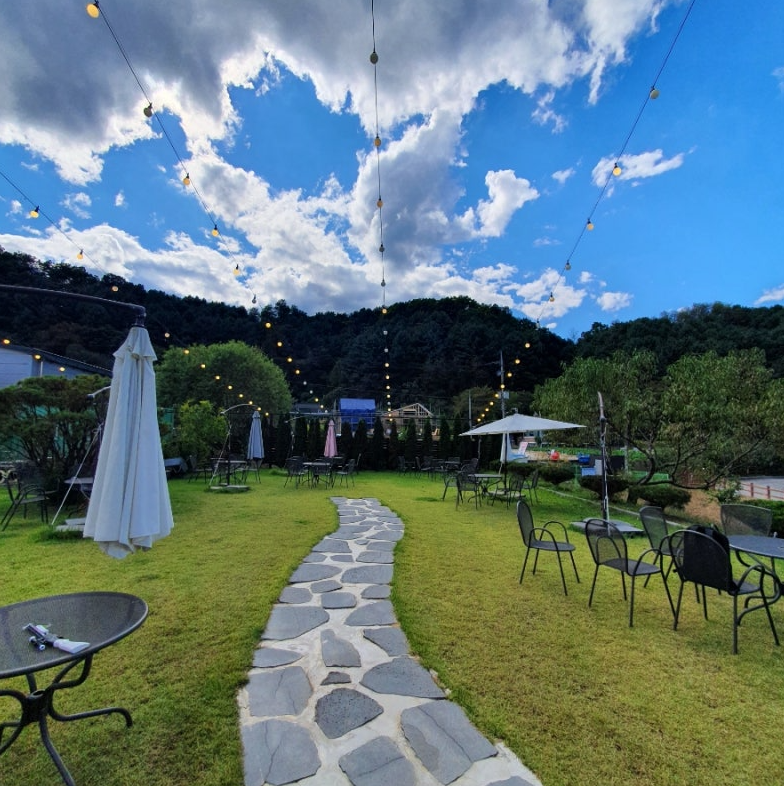
Transportation Tip: Hoengseong Lake Trail is easiest to reach by car. It’s about a 20-minute drive from Hoengseong Station. If you’re coming from Seoul without a car, you can take a KTX train or bus to Hoengseong city, then a short taxi (around 15–20 minutes) to the lake. Buses in this rural area are infrequent, so I’d recommend planning a taxi or rental car to make the trip stress-free.
Wondaeri Birch Forest 원대리 자작나무숲 – A Winter Fairytale
Address: 760 Jajangnamusup-gil, Inje-eup, Inje-gun, Gangwon-do
If you’ve ever dreamt of walking through a fairytale forest, Wondaeri Birch Forest in Inje is that dream come true. I visited on a late autumn morning, but this place is especially magical in winter. Picture hundreds of thousands of slender white birch trees standing tall on the slopes, their trunks glowing against a backdrop of snow. Honestly, I half-expected to see a deer or maybe a mythical creature peek out from behind a tree – it’s that enchanting. The locals affectionately call it the “Whispering Birch Forest” because when the breeze blows, the birch leaves rustle with a gentle whispering sound. Walking among these trees, I felt a strange calm, like I was in a natural cathedral with sunlight dappling through the branches.
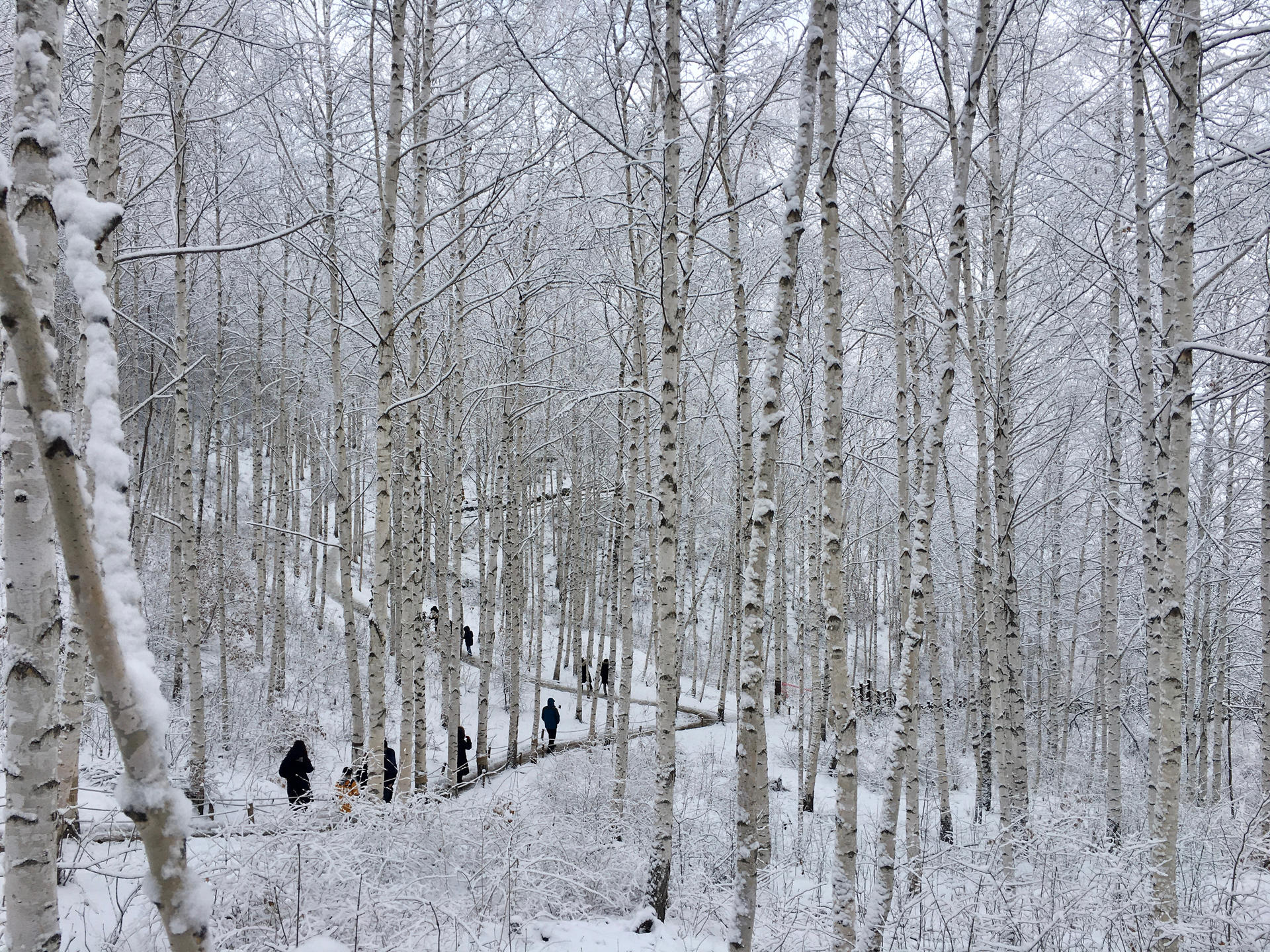
There are a couple of well-marked trails weaving through the birches, ranging from about 1 to 1.5 hours of walking. I took the slightly longer loop, which starts with a bit of an uphill hike. Fair warning: the first 20 minutes are a steady climb (I was huffing and puffing a tad, not going to lie), but once you crest the hill and descend into the heart of the birch grove, it’s flat and easy. Along the way, signposts share tidbits about the forest’s ecology (in Korean and basic English). I learned this forest was actually a reforestation project decades ago – around 690,000 birch trees were planted here! Now it’s a thriving eco-park and even a filming location for K-dramas. K-drama fans, you might recall a romantic scene in “Something in the Rain” (Son Ye-jin and Jung Hae-in’s characters had a dreamy winter date here), or a poignant snowy farewell scene in “Kingdom” (Season 2) – both were filmed in Wondaeri Birch Forest. Knowing that made me see the place with new eyes, imagining the characters among the trees.
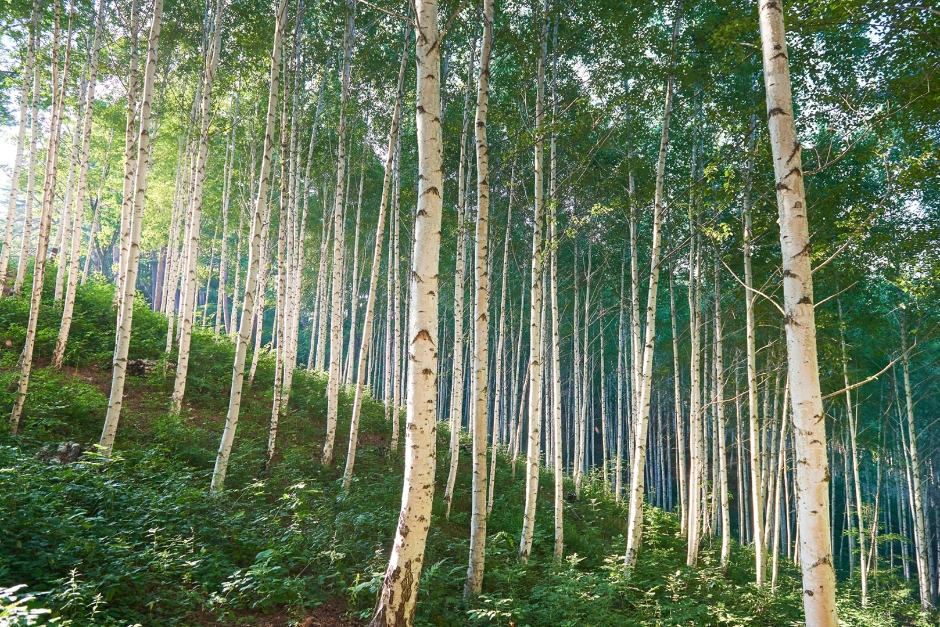
Practical stuff: Wondaeri Birch Forest is open to visitors roughly from 9am to 5pm (last entry by mid-afternoon because they don’t want people stranded in the woods after dark). It’s closed on Mondays and Tuesdays, so plan accordingly (I almost went on a Monday – phew, crisis averted!). There’s no entry fee; just sign in at the small ranger post. The forest is well-preserved, so there’s no snack bar or anything inside – bring water and maybe a thermos of hot cocoa if you’re coming in winter. And definitely wear good shoes or boots; the path can be muddy in fall or snowy/icy in winter. I visited in sturdy sneakers but switched to snow boots when I came again in January (yes, I loved it enough to return in deep winter – and it was like walking in Narnia!).
After hiking out, I drove back towards Inje town with cheeks rosy from the cold and stomach growling from the exercise. Just outside the forest area in Wondae-ri village, I found a small family-run eatery called “Old Wondae Makguksu” (옛날 원대막국수). This unassuming place is famous among locals for its makguksu – chilled buckwheat noodles, a Gangwon-do specialty. Don’t be fooled by the rustic vibe; the noodles were incredibly refreshing and topped with spicy radish kimchi and slices of boiled pork. The elderly couple running the restaurant were so welcoming, and even though we communicated with smiles and pointing, I felt right at home. A bowl of those noodles (or a hot bowl of pheasant dumpling soup, another regional specialty they offered) is just the thing after a forest trek. If noodles aren’t your thing, Inje town (about 15 minutes away) has other options like trout dishes (Inje is known for its trout). But personally, slurping those buckwheat noodles while recalling the birch forest’s beauty was a perfect end to that excursion.
Getting There: Wondaeri Birch Forest is a bit remote. I was lucky to have a car – it took me about 2 hours driving east from Seoul and the route was scenic, passing through mountains. If you’re using public transport, you can bus from Dongseoul Bus Terminal to Inje Bus Terminal (~1.5 hours), then either grab a local taxi (around 15 minutes, roughly ₩20,000) or catch the once-a-day local bus to Wondae-ri village (check the schedule in advance, as it typically leaves late morning). Most foreigners I’ve met opt for the taxi or even join a small group day tour, since the bus timing can be tricky. The forest has a parking lot and a restroom at the entrance, but remember no food stalls – plan ahead and maybe pack some snacks.
Daegwallyeong (대관령) – Nighttime Drives & Otherworldly Stargazing
Address (Samyang Ranch): 708-9 Kkotbatyangji-gil, Daegwallyeong-myeon, Pyeongchang-gun, Gangwon-do
My final hidden gem leads us high up into the mountains of Gangwon-do, to Daegwallyeong – a place where rolling pastures meet the sky. Daegwallyeong is famous for two things: the huge Samyang Ranch (also known as Daegwallyeong Sky Ranch or Sheep Ranch) and its iconic wind farm. By day, Samyang Ranch is a postcard-perfect landscape: green meadows (or snow fields in winter) dotted with grazing sheep and cows, and giant white wind turbines turning slowly on the ridges. I spent an afternoon here petting sheep and just wandering one of the easy trails named “Hill of Wind” – appropriately named, as I ended up right beneath a towering turbine whooshing gently above me. It felt surreal and free, like I was on the set of a movie. In fact, if you’ve seen any Korean commercials or travel brochures with windmills and fluffy clouds, it was likely filmed here. The ranch is the largest highland farm in Asia, so you can walk or take a shuttle bus to various points. From the hilltop, the view of endless grassland and sky is something else. I even caught sight of the East Sea in the far distance on a clear day!
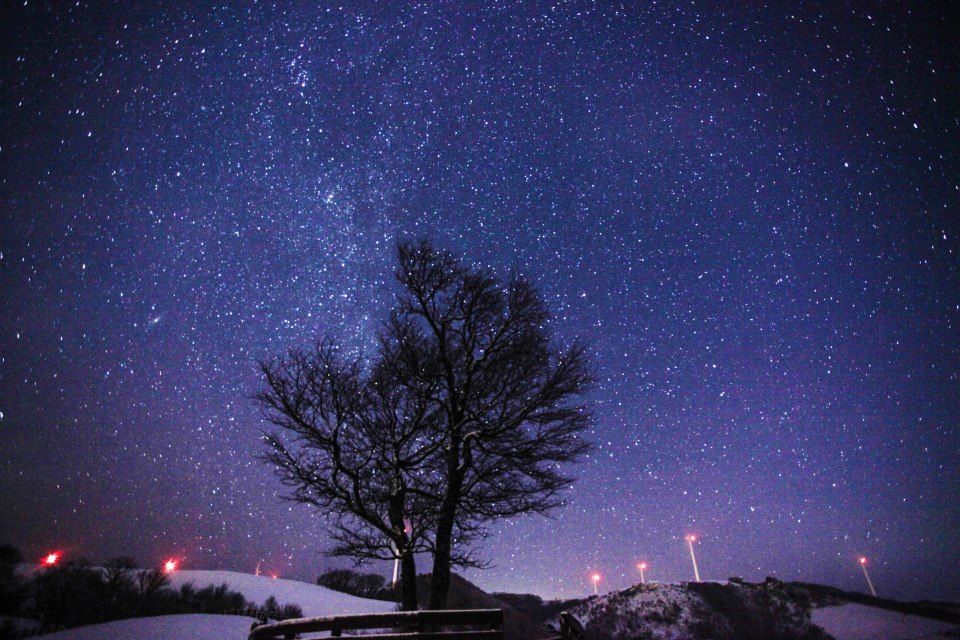
But the real magic for me was after sunset. Driving through Daegwallyeong at night was one of the most romantic, almost otherworldly experiences I’ve had in Korea. As daylight faded, I took the winding old mountain road instead of the highway. There were hardly any other cars. The air at 1,000 meters altitude was crisp, and when I rolled down the window I was greeted by the sound of... silence, except for the faint whir of wind turbines somewhere in the dark. Above, an astonishing number of stars began to appear. With minimal light pollution up here, the stargazing is phenomenal – the Milky Way spread across the sky like a glittering ribbon. I pulled over at a safe lookout point near the ranch (don’t worry, it’s a spot locals know for views) and just gazed up in awe. Honestly, it felt like stepping into another world. The giant windmills on the ridges were now just silhouettes with tiny red lights blinking on them, and the hills were bathed in gentle moonlight. I wrapped myself in a blanket (Korean mountain nights are chilly even in summer) and spent a good half-hour identifying constellations. It’s the kind of place where you might find a couple quietly holding hands under the stars, or an amateur photographer with a tripod trying to capture the celestial show. In that moment, Daegwallyeong truly lived up to its name as a “great mountain pass” – a pass leading straight to the heavens, it seemed.
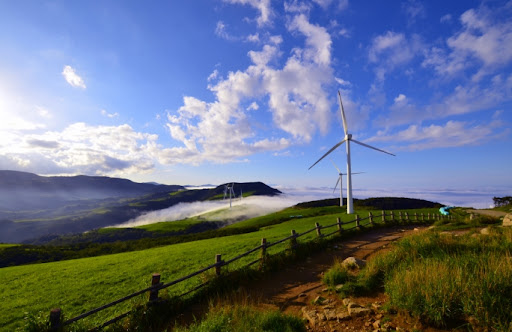
Eventually, the cold sent me searching for warmth. Luckily, just down the road in the small town of Hoengwally (at the base of Daegwallyeong) there are several eateries open late to comfort cold travelers. I stopped at a cozy local restaurant famed for its hwangtae haejangguk (황태 해장국), which is a spicy hangover soup made with dried pollack fish – a specialty of this region. The dried pollack (called hwangtae) is hung in the frigid mountain air every winter to dry, and it becomes incredibly flavorful. This soup came bubbling hot, full of tender flakes of fish, radish, and egg, and it absolutely hit the spot after a night of stargazing. If fish soup isn’t your thing, Daegwallyeong area is also known for delicious highland beef and lamb dishes, but I personally adore hwangtae soup for its unique local character. Sitting there in a simple diner with my steaming bowl, among a mix of local farmers and a couple of fellow road-trippers, I felt a warm sense of camaraderie. We were all travelers in our own way, drawn to Daegwallyeong’s quiet magic.
Travel Notes: Daegwallyeong Samyang Ranch is open in the daytime (roughly 9am–5pm) year-round and has an admission fee (around ₩12,000 for adults). To reach it, driving is recommended – it’s about 30 minutes from Pyeongchang or 40 minutes from Gangneung by car. You can also take an express bus from Seoul to Hoengwally and catch a taxi (10 min) up to the ranch entrance. If you plan to do a night drive for stargazing, be sure you’re comfortable with mountain roads; they are well-paved but quite curvy. Also, bring a jacket – even in August the mountain nights can be cool. There are a few pensions (guesthouses) in the Daegwallyeong area if you decide to stay overnight for sunrise or want to split up the trip. I promise, waking up in the clouds on a Daegwallyeong morning is just as enchanting as the nighttime.
FAQ – Your Questions Answered
Q: Can I visit all these places in one trip?
A: They are all in Gangwon-do but pretty spread out. If you have a car and a full day, you might combine Hoengseong Lake and Daegwallyeong (they’re a couple hours apart driving). Wondaeri Birch Forest is in a different direction, so it’s best paired with a trip to Sokcho or made its own day trip. I personally did them on separate outings to fully enjoy each without rushing. If you’re short on time, pick one or two that excite you most!
Q: What’s the best time to visit these spots?
A: Honestly, each place shines in different seasons. Hoengseong Lake Trail is lovely year-round – fresh green in spring, lush in summer, stunning foliage in autumn, and peaceful (though a bit cold) in winter. Wondaeri Birch Forest is absolutely magical in winter with snow; if you can brave the chill, January or February will reward you with a true winter wonderland (plus those K-drama vibes). It’s also beautiful in late autumn (golden light and no bugs). Daegwallyeong Samyang Ranch is great in summer for green landscapes and in winter for snow scenes and clear starry nights. Just avoid heavy rain days or deep winter storms for safety.
Q: Are these places foreigner-friendly? What about language barriers?
A: They’re not tourist traps at all, so you won’t find a ton of English signage, but you also won’t face any big problems. At Hoengseong Lake Trail, the ticket booth staff understood basic English and the map was easy to follow (plus, it’s a loop – you can’t get lost!). Wondaeri Birch Forest had some signs in English and the staff at the entrance will give you an info pamphlet. Samyang Ranch in Daegwallyeong actually has maps in English and staff used to foreign visitors (it was a venue during the 2018 PyeongChang Olympics, after all). Locals in Gangwon-do are generally kind and will try their best to help even if there’s a language gap – a smile and a few travel phrases in Korean go a long way.
Q: How should I dress or what should I bring?
A: Dress comfortably for walking. For Hoengseong Lake, regular sneakers and casual clothes are fine; for Wondaeri Birch Forest, wear good walking shoes (or hiking boots in winter) and layers – it can be colder under the forest canopy. For Daegwallyeong, even in summer have an extra layer; weather can change fast in the mountains. Also, bring some cash (KRW) for small fees and your camera to capture the scenery!
I hope this travelogue inspires you to venture beyond the usual tourist spots and discover the quieter charms of Gangwon-do. Whether you’re strolling along Hoengseong Lake Trail listening to the gentle waves, wandering in the whispering Wondaeri Birch Forest, or driving under the stars at Daegwallyeong, you’ll find that these hidden gems offer a kind of peace and beauty that stays with you. And if you do make it out there, let me know – I’d love to hear your own impressions! Sometimes the best travel memories come from the places you least expected. Happy exploring, and as the Koreans say, 즐거운 여행 되세요 (have a great trip)!
'Hidden Gems' 카테고리의 다른 글
| Why Young Koreans Flock to Gwangjang & Kyungdong Markets (0) | 2025.04.15 |
|---|---|
| Exploring Seoul’s Unseen Treasures: 7 Unique Spots (2) | 2025.04.14 |
| Ulleungdo: Discover the Enchanting Haengnam Coastal Walking Path (0) | 2025.04.08 |
| Jeongdong-Simgok Badabuchaegil Trail – Gangwon’s Hidden Coastal Gem (0) | 2025.04.07 |
| Gapado Island (가파도) – A Hidden Gem off Jeju (0) | 2025.04.06 |



